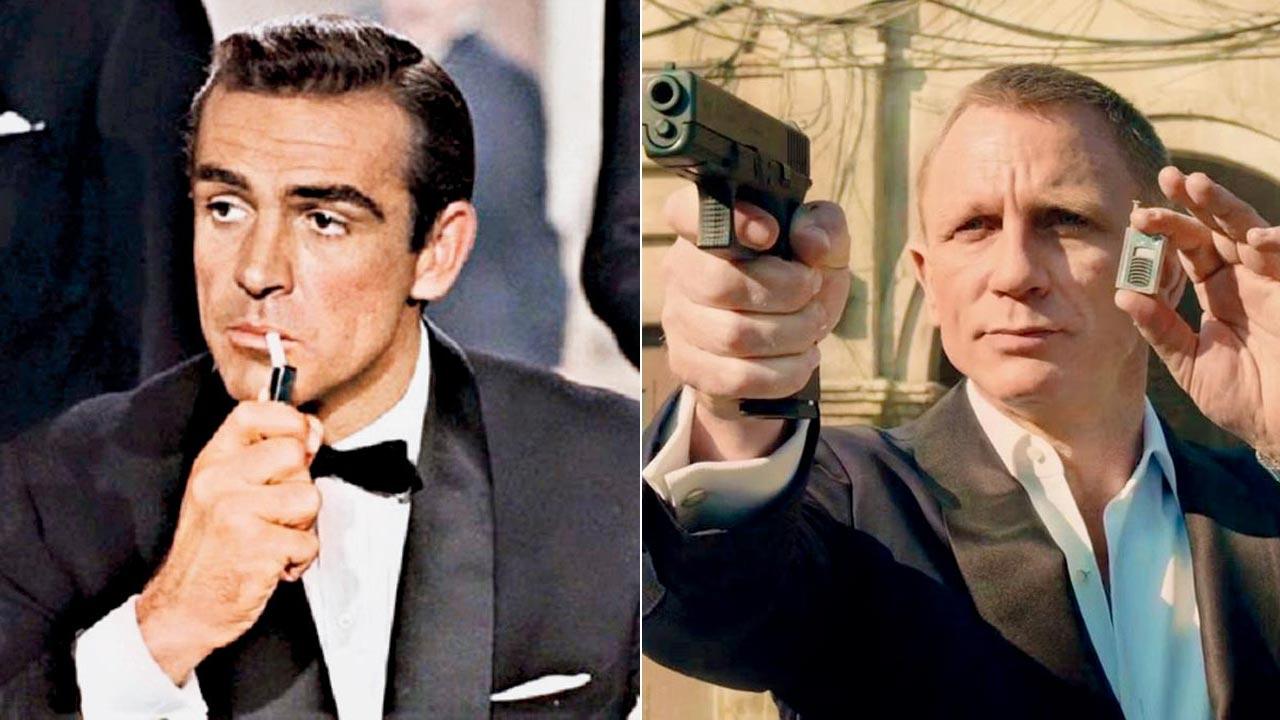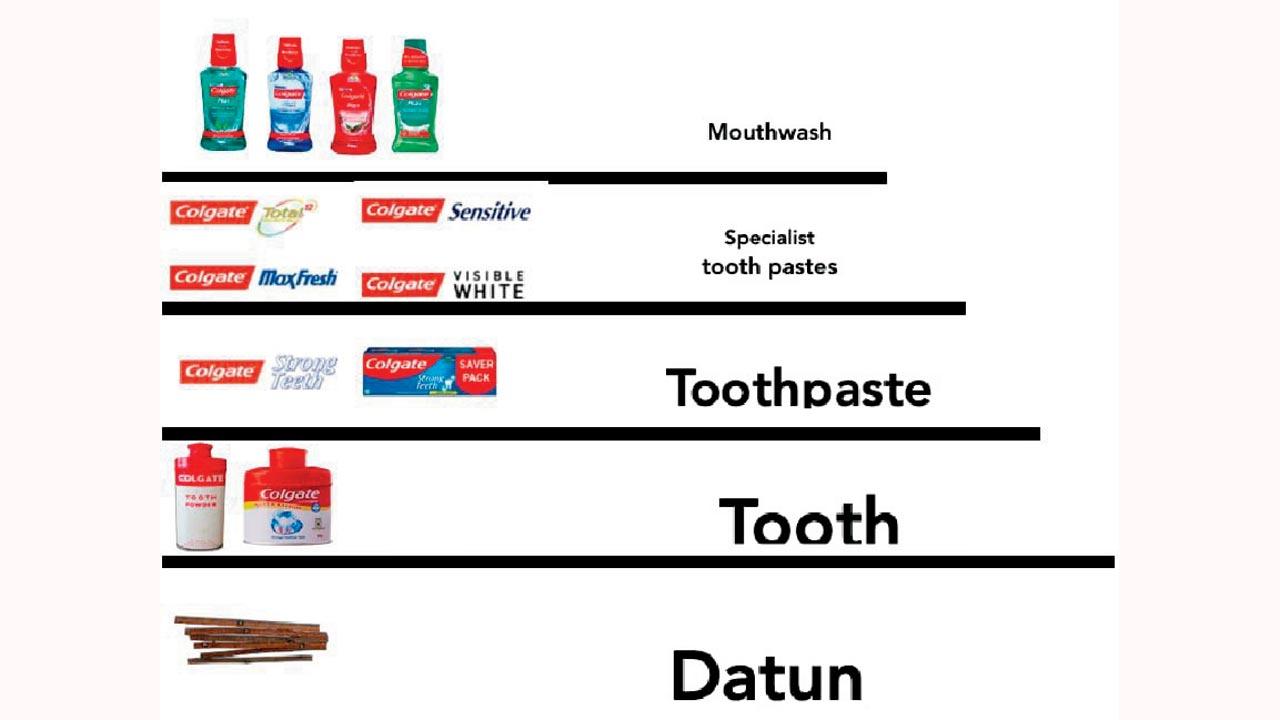A new visual book illuminates compelling pro-planet brand ideas born out of a dialogue between owners and consumers

Adman and Colaba resident Kiran Khalap has just rolled out two books to mark the 25th anniversary of his branding consultancy firm. Pic/Shadab Khan
![]() A while ago, I revisited the recently restored film Manthan, which brought to life the power of a farmers’ cooperative and the idea of doing business without middlemen. Manthan was crowdfunded in 1976 by five lakh farmers of Gujarat; the film was celebrated over the years for honouring the values that built the grassroots cooperative movement of dairy farmers. Forty-eight years later, the Gujarat Co-operative Milk Marketing Federation funded the film’s high-definition restoration; the film is an inseparable part of the federation’s Amul brand—now a global phenomenon. In fact, the federation head walked the red carpet with the cast at the screening in Cannes.
A while ago, I revisited the recently restored film Manthan, which brought to life the power of a farmers’ cooperative and the idea of doing business without middlemen. Manthan was crowdfunded in 1976 by five lakh farmers of Gujarat; the film was celebrated over the years for honouring the values that built the grassroots cooperative movement of dairy farmers. Forty-eight years later, the Gujarat Co-operative Milk Marketing Federation funded the film’s high-definition restoration; the film is an inseparable part of the federation’s Amul brand—now a global phenomenon. In fact, the federation head walked the red carpet with the cast at the screening in Cannes.
ADVERTISEMENT
It was fortunate timing that right after watching the film, I found myself diving into Kiran Khalap’s petite, chatty new book (80 pages, currently released online only), The 4ourth Era of Branding. Just as the film depicts the struggle and triumph of dairy farmers, the book lauds Amul (Anand Milk Union Limited), a brand born out of the resilience of small dairy farmers fighting against exploitation, at the same time ensuring a fair price to consumers. Khalap counts Amul among the socially responsible, pro-people, environmentally-aware corporations which leveraged brand power to make India the largest milk-producing nation on Earth!
In 2020, at the peak of the COVID-19 pandemic, Amul introduced 33 new products for the locked down consumers cooking at home. The company paid an additional Rs 800 crore to its 3.6 million farmers in that year. Successful brands relate to the “human opportunity”, not just the product/category; they factor in the emerging realities of the time and place and they connect with the consumer at an emotional and rational level.
 The book, The 4ourth Era of Branding, uses the James Bond movies to highlight how some things evolve in a brand, while other traits remain unchanged. For instance, earlier Bonds (such as the iteration played by Sean Connery) were smokers, while Daniel Craig’s Bond does not smoke. On the other hand, the Bond movies continue to feature cool gadgets, such as Craig’s fingerprint-activated gun
The book, The 4ourth Era of Branding, uses the James Bond movies to highlight how some things evolve in a brand, while other traits remain unchanged. For instance, earlier Bonds (such as the iteration played by Sean Connery) were smokers, while Daniel Craig’s Bond does not smoke. On the other hand, the Bond movies continue to feature cool gadgets, such as Craig’s fingerprint-activated gun
“When the brand owner wholeheartedly aligns all business to a timeless philosophy—in Amul’s case ‘no middlemen’—branding becomes truly successful. Brand is just the idea, branding means aligning,” says adman-author-trekker-motivational-speaker Kiran Khalap, who has just rolled out two books to mark the 25th anniversary of chlorophyll branding consultancy firm, which is proud of the conscious use of a lower case name. He co-founded chlorophyll with Madan Bahal in 1999. “Our attempt is to use this book as a conversation starter to make brands and branding clearer and more interesting. Branding is still considered a subset of advertising, while the opposite is true,” says Khalap.
The second book Ideantity states that instead of a logo, a brand must own an identity that encapsulates what the brand stands for. Similarly, The 4ourth Era of Branding is a handy guide for readers to choose their brands judiciously; it’s a work of a practitioner who has “40 unbroken years” in the ad world. He curated and delivered the branding curriculum for the LiverPool Business School Online MBA programme. He taught Jean-Noël Kapferer’s theories in Clarion College of Communication in Kolkata. He was chairman of the committee that created the marketing strategy for the world’s biggest biometric brand, Aadhaar. Khalap never wanted to pen another tome which talks shop and tabulates content in predictable weighted averages!
The book quadrifurcates branding in four unique spans. The first (pre-digital) era begins from “whenever to 2004”, in which brand owners engaged in simple one-way communication with the consumers through facilitators like TV channels, PR firms, retail suppliers, etc. In this era, the brand’s psychological/legal possession was in full control of the owner. Consumer communities had no tools to speak to the brand owner, except in some iconic cases like Coca Cola (1985), where consumers responded to the New Coke through a telephone-fax campaign that said, “How dare you change the taste of my Coke?”
 An infographic from the book illuminates the concept of a pseudomature market with multiple levels of evolution: In the oral hygiene category neem sticks share company with fancy mouthwash and mint fresheners
An infographic from the book illuminates the concept of a pseudomature market with multiple levels of evolution: In the oral hygiene category neem sticks share company with fancy mouthwash and mint fresheners
The second era (2004-19) in the book begins with the birth of Facebook and ends before the COVID-19 crisis and the resultant recession. A lively online community places itself between brand facilitators and users in this momentous recent past. This ‘online’ stakeholder has democratised the exchange of views, which has an impact on the real world. For instance, after consumers rejected the new look of the Tropicana drink, the company incurred losses and its competitors benefitted. Soon, Tropicana premium was made available in its original packaging.
The book journeys through the third era (2020-2023) characterised by a sudden evaporation of national boundaries; also dominated by the average human being’s increased alertness towards safety in day to day life, be it food, drinks, air, make-up and hygiene basics. The pandemic not only heightened awareness about high-probability risks, climate crisis and biodiversity loss, but it compelled the market forces to rethink its profit-driven business mantras. Brand owners started thinking of sustainability, safety and transparency—three overarching themes. In fact, safety and transparency are now particularly valued in food, health and cosmetics brands. Cosmetovigilance is an emerging field where beauty brands are scrutinised publicly.
This columnist grew up in an era where fragrance in personal care products was welcome; but now the term “fragrance” on a product label is perceived as an obscure complex mixture of chemicals with undisclosed ingredients!
As Khalap puts it succinctly: the Earth and her future inhabitants became the new stakeholders in the third era. If not for altruistic reasons, then at least for the general “public good” rationale, investors-shareholders and strategists embarked on Socially Responsible Investing. In fact, the year 2021 witnessed record inflows into ESG-focused (environmental, social, and governance) funds due to investors’ worries about climate change and social justice issues. It is not that ESG was unheard of before the inflection point of the pandemic, but brands started realising the need to be on the right side of history. What else can explain Rolls Royce’s (known for cars) apiary project to conserve Britain’s endangered bee population! Also Johnnie Walker scotch sold in paper bottles to reduce carbon footprint; Adidas partnering with a little-known Australian company to create biodegradable running shoes! Not to forget Amazon’s declared shift to renewable energy sources for electricity consumption.
Khalap’s book showcases many global entities which have realised the worth of listening to the other stakeholders (be it activists or employees) that contribute to the worth of the brand. For example, Nike heeded employees’ protest against the naming of its building after a famous coach who was found guilty of inappropriate behaviour towards female athletes. Nike bowed down to staff opinion and rechristened the building to Next%. Similarly, Unilever ended animal testing of tea and other beverages, after PETA threatened a global ‘CruelTEA’ campaign.
Khalap says the fourth era hinges on pure hypothesis aligning with the entry of Artificial Intelligence into human life. He quotes American futurist Ray Kurzweil known for his work on the concept of “singularity”, which is a juncture when AI will surpass human intelligence. By 2029, “just five years hence”, warns Khalap, AI will be used to choose/assess brand reputation and analyse visual elements, of course leveraging technologies like AI-powered recommendation systems, image recognition, data analytics and personalisation. In fact, the expected gains from the new advances are so zapping that Khalap wants to rename AI as Alternative Intelligence. He visualises a scenario where humans won’t need to bother about health markers. An AI-pin under the skin will talk to the fridge/phone/AC; if the fridge runs out of apple juice, the phone will scan the products online, and the ‘smart’ machines will place the order, as per the pre-fed info!
While delineating branding trends, the book acknowledges that India cannot be treated as one single market. In fact, Khalap terms it a “pseudomature” market; a vast playground characterised by multiple levels of evolution. The random online buyer of (lipstick) cosmetics is hugely aware of unsafe chemicals. But the wealthy buyer may not be sensitive to the impact of bottled water on the Earth’s future. The book underlines the coexistence of the varied players and also varied brand options catering to different demographics in a single category. Khalap brings to notice an amusing illustration in the oral hygiene category—neem sticks exist with mouthwash, manjan vended alongside mint fresheners!
Kiran Khalap has a unique view on branding and life. His originality stems not just from the fact that he has four uninterrupted decades in the ad world, but because he inhabits diverse worlds—rock climbing, writing and meditation; he has a species of spider named after him, thelcticopis kirankhalapi.
He started as a teacher in an experimental residential J Krishnamurti school, Varanasi. For the uninitiated, Khalap’s TEDx stints continue to inspire new-age branding communicators.
This columnist was a bit puzzled by the petite size of his practitioner’s guide. But Khalap has written a “deliberately sketchy” book. He says each of the four eras demands one book for itself, but currently he has written a conversation-starter to begin the party!
Sumedha Raikar-Mhatre is a culture columnist in search of the sub-text. You can reach her at sumedha.raikar@mid-day.com
 Subscribe today by clicking the link and stay updated with the latest news!" Click here!
Subscribe today by clicking the link and stay updated with the latest news!" Click here!








